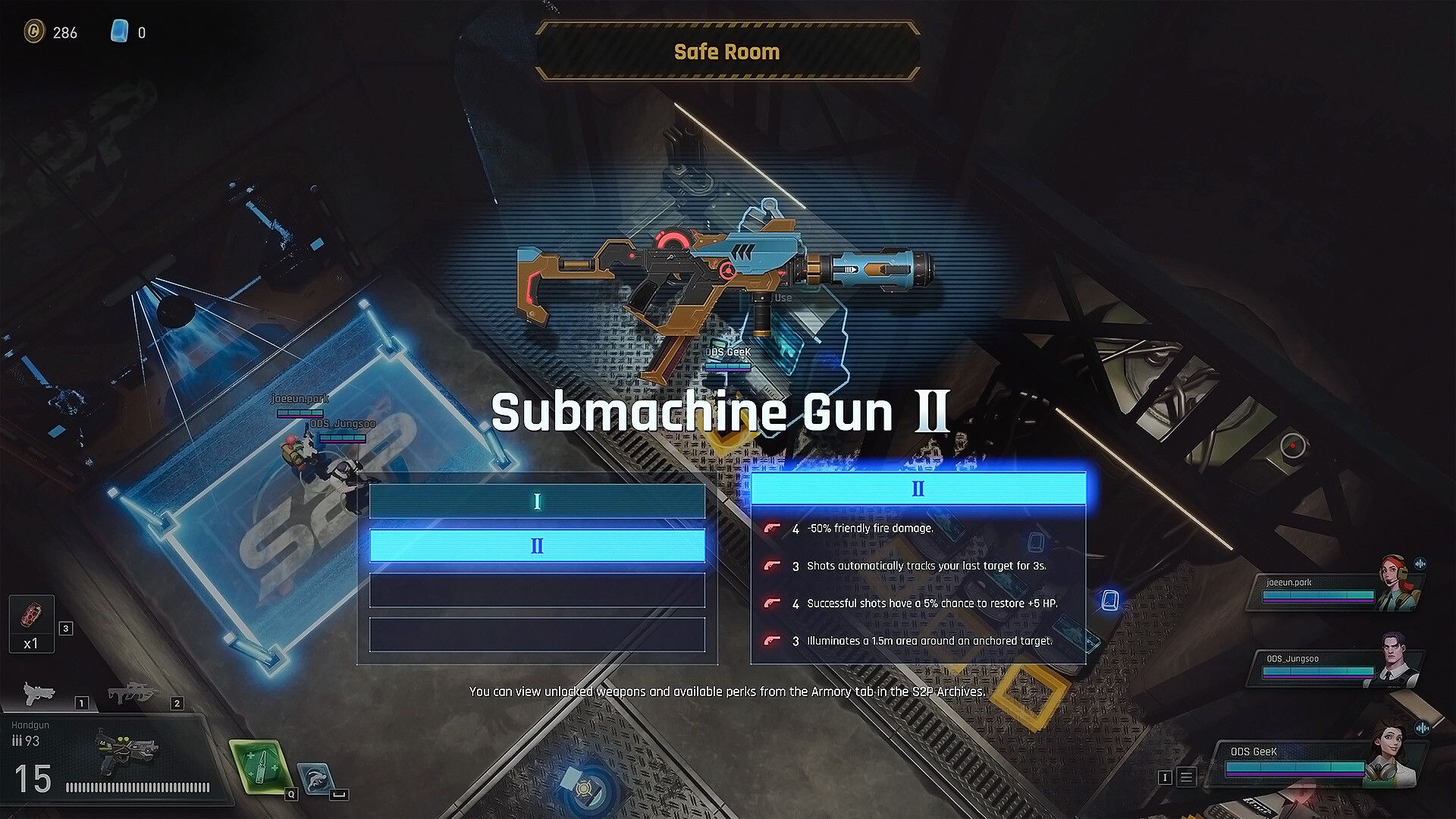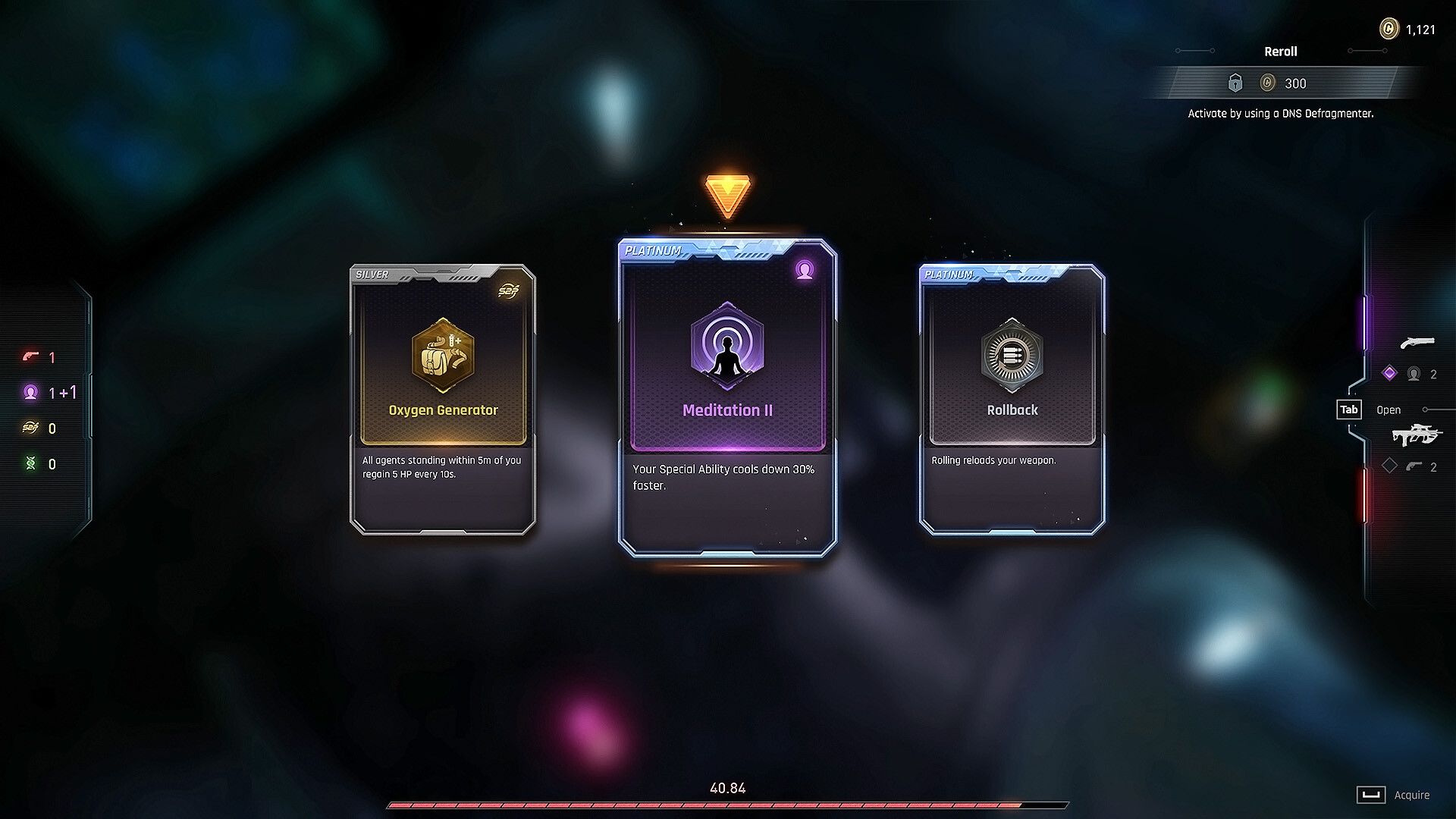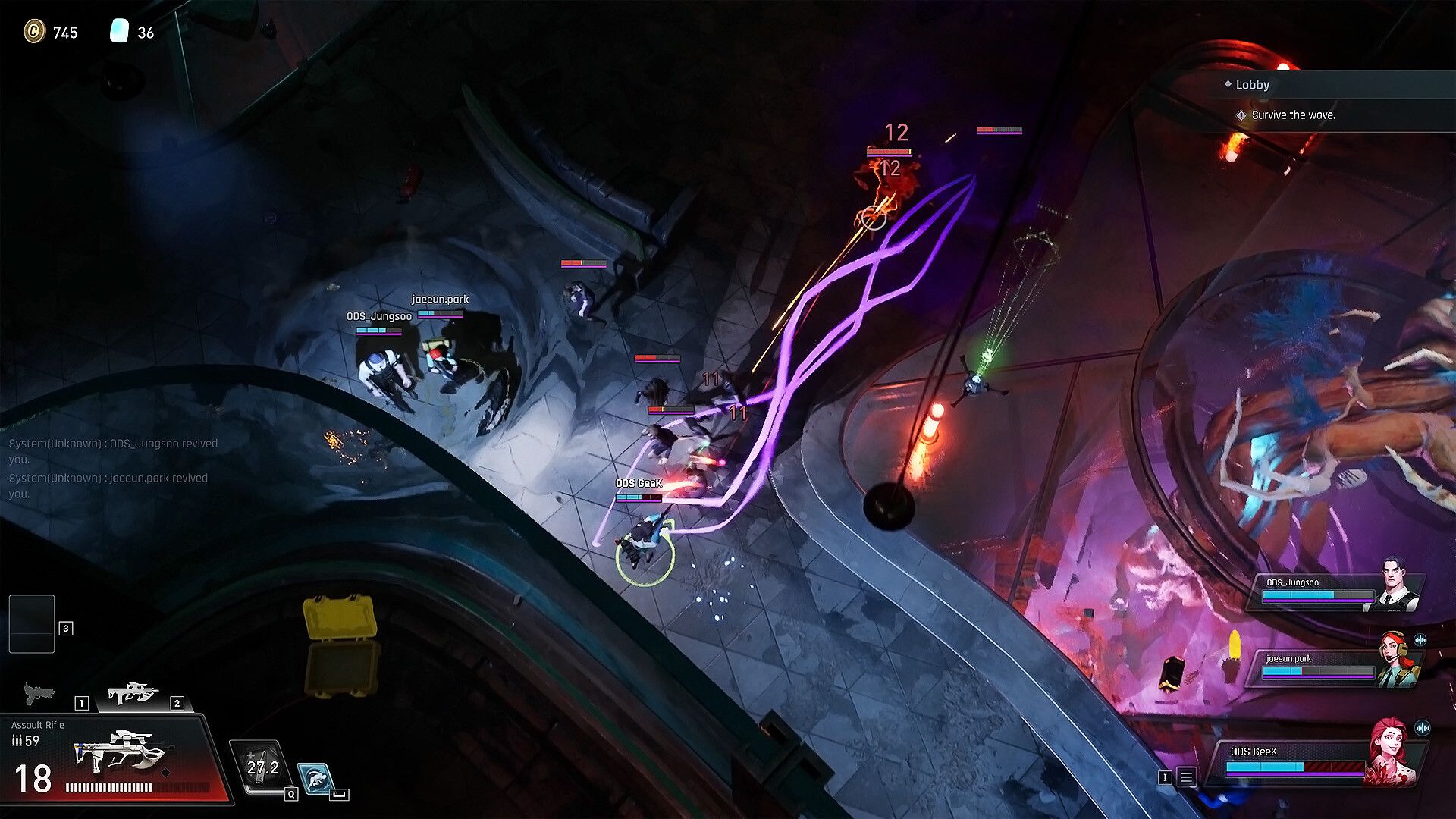
There has been no real shortage of games focusing on co-op from the indie space, especially when it comes to roguelites. A lot of them, however, tend to focus more on the power fantasy aspects of a roguelite, leading to a game that might be fun to play because you get to see big numbers on the screen, but don’t offer much in the way of challenge. There are exceptions, however, and we’re here to talk about one such game: Blackout Protocol.
At its core, Blackout Protocol isn’t a particularly complicated game; it controls much like any twin-stick shooter you can imagine, and it features both temporary as well as permanent progression tracks. Where it sets itself apart, however, is that it is almost entirely focused on 3-player co-op. There’s no real balancing changes if you decide to play solo or with just one partner. Playing solo tends to be its own can of worms that we’ll get into shortly.
Before we get any further, however, it’s worth keeping in mind that Blackout Protocol is an early access title. This means that development on the game is on-going, and details of this review might end up being out-dated by the time the full release comes around, especially when it comes to smaller aspects like balancing. We also know for a fact that there will be quite a bit of content added to the game over time, including new levels, bosses, weapons, and playable characters.
"There’s no real balancing changes if you decide to play solo or with just one partner."
As it currently stands, however, Blackout Protocol isn’t in a particularly bad place. It lets you pick from four playable characters, features five levels of escalating difficulty and varied objectives, and 12 weapons, all of which are surprisingly well-balanced when it comes to use-case and niche.
To start things off, you’re given a short tutorial on the core game loop you’re going to experience throughout much of Blackout Protocol. The tutorial does a decent job in showing you how you can get permanent upgrades, how you go about unlocking weapons, and how the game generally controls. Before you get too comfortable, however, you’re thrown into a boss fight that you don’t really have any chance of beating. And that’s when the game actually begins.
Equipped with an assault rifle, a pistol, and four playable characters, you’re supposed to make your way into the building’s parking lot, and work your way deeper. The characters all play in essentially the same way when it comes to the action. Each character does, however, have a special ability that will do quite a bit to change how you play. Beaker, for example, can heal herself and nearby allies. Scalpel, on the other hand, has a special melee attack that does a lot of damage and heals her in the process. Both Boy Scout and Red have more combat-centric specials, with Boy Scot being able to slam the ground to cause damage in an area around him, and Red being able to increase weapon firing speed.

"And that’s when the game actually begins."
Things get a lot more interesting once you start unlocking weapon blueprints. Weapons have “departments” that they belong to, which can in turn be affected by the temporary power-ups you find as you play through the game. For example, the Sniper Rifle comes from the Firearms department, while the Tactical Crossbow comes from the R&D department. While this doesn’t mean much by itself, players can find Nethercubes throughout a run that give them a power boost for the duration of that run which can affect these departments. For example, grabbing a Firearms-based power-up will unlock a new perk for your SMG, while picking a Psionics-based power-up will in turn power up your Arc Cannon.
Alongside the interplay of perks and weapon departments, there are also power-ups that can affect your choice of weapons for a run. The One Way power-up, for example, encourages using two weapons from the same department for a damage boost.
Speaking of which, damage comes in two forms in Blackout Protocol: physical and mental. While physical damage directly affects health, mental damage affects the enemies Panic Gauge. Depending on which department your weapon comes from, you’ll either deal direct damage, or your shots will first chip away at the Panic Gauge which, when emptied, can cause different effects, from making the enemy drop their weapon to getting stunned for a bit. Interestingly, friendly fire is also permanently enabled, and players can just as easily take out each others’ health and Panic Gauges.

"There are also power-ups that can affect your choice of weapons for a run."
Light also plays an important role in combat and exploration. Some enemies can sneak up on you and start dealing quite a bit of mental damage if you’re not careful, with your only recourse being shining a bright light at them. Most of the time, players will have to rely on their flashlights to drive these enemies away, since they can’t be dealt with by just shooting at them. This is one of those places where a co-op partner is incredibly important, since there can be quite a few objectives that need you to focus on interacting with some machinery; having a friend to keep these things off your back will make sure that your run doesn’t come to an end prematurely.
Which brings me to one of my biggest sticking points with Blackout Protocol: if you’re a solo player, this game isn’t for you. Since it’s almost entirely balanced around having at least one co-op partner with you, the number of enemies in any given combat encounter will inevitably drain your ammo at a rapid pace. And that’s assuming that you don’t just get swarmed and killed with little fanfare. While it is possible to solo the game with a lot of preparation and grinding out some permanent upgrades, you don’t really get a chance to grind before you’re thrown into your first big encounter in the opening level. This essentially leaves you with little more than a wall that you’re going to bang your head against.
The story in Blackout Protocol isn’t particularly deep, and essentially just acts as an excuse to get you into its randomly generated levels. Players are put into the shoes of agents of the shadowy S2P Corporation, which houses subjects of seemingly unethical experiments. After suffering a containment breach in a sprawling underground research base called Section 13, agents are called in to go in and stop the experiments from running wild. There’s nothing more to the game beyond that, and the game as it currently stands doesn’t even have collectible lore entries, which seems like a bit of a let-down.

"You don’t really get a chance to grind before you’re thrown into your first big encounter in the opening level."
When it comes to visuals, Blackout Protocol is a decent looking game. While nothing to really write home about, the visual design and graphics do a good job in not only making moments feel tense and threatening, but also in making clear things that you’re supposed to notice, be it enemies, weapons, or ammo pick-ups. The game does pull off some nifty tricks with its camera, which is all-the-more impressive when you consider the fact that its levels are randomly generated. An early example of this is the first level pivoting and panning the camera to give you a different look at the parking lot you’re fighting your way through.
Blackout Protocol is an excellent first step for a game that’s just coming out in early access. While the balancing and amount of content may not quite be all the way there yet, the fact that it’s an early access game indicates that the studio will be paying close attention to player feedback. Add in the fact that the five levels currently in the game already offer a pleasant level of challenge for players to take on, especially if they’re playing as a group, and Blackout Protocol feels like a pretty decent first stab at the idea. Solo players might want to look elsewhere, however, since the balance is skewed too heavily around having multiple players in a level.
This game was reviewed on PC.
Playing with perks can be fun; Genuinely tense co-op gameplay.
Underwhelming experience for solo players.
















